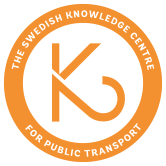Many public transport services are heavily subsidized. One of the main justifications is the expected beneficial effect on road congestion. Stockholm introduced congestion pricing in 2006 and the effects on car and public transport demand were carefully monitored. The change in prices provides unique estimates on price- and cross-price elasticities. This paper uses these data to model how the optimal pricing, frequency, bus size and number of bus lanes for a corridor depends on the presence of congestion pricing for cars. Results show that the presence of road pricing makes the current subsidies for peak bus trips too high. However, the major welfare benefits of re-optimizing the current bus supply stem from a decrease in frequencies during the off-peak period and the use of larger buses.
